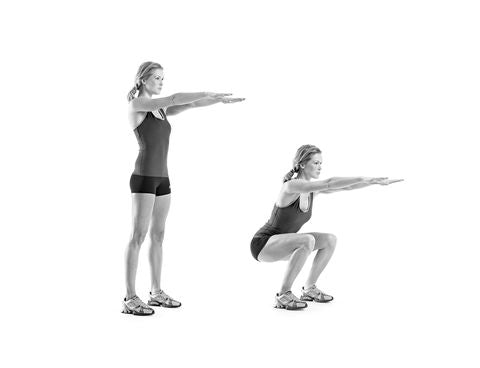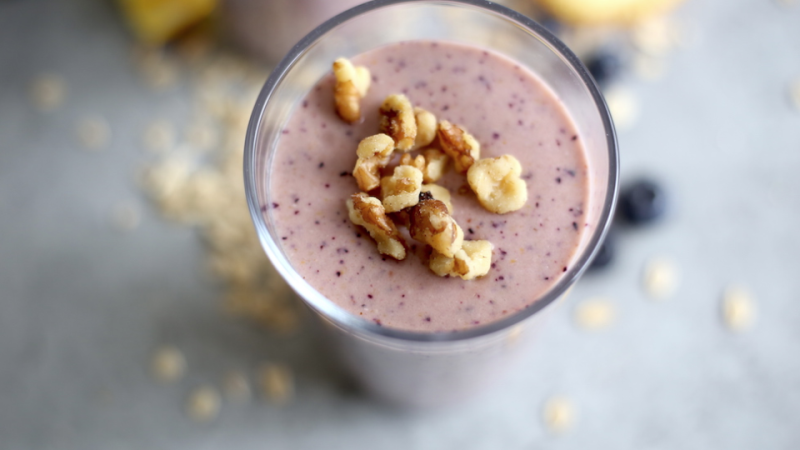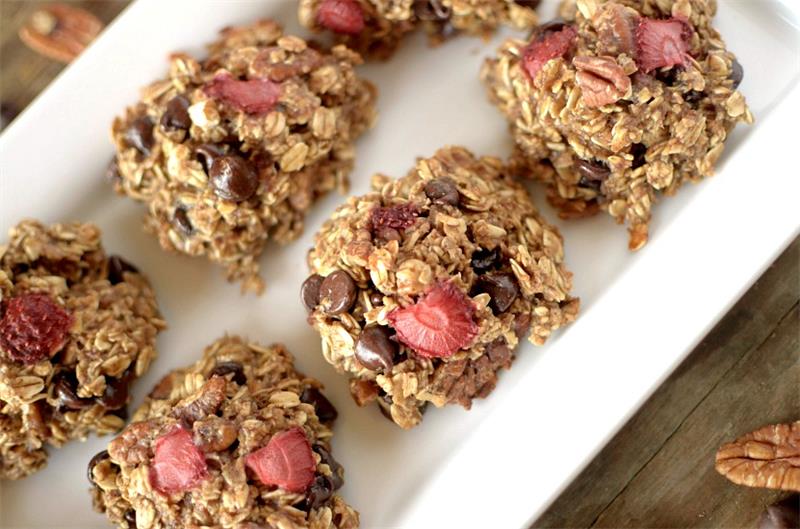How to deal with Office Sub Health?
What is Sub Health?
It's your alarm signal to start making changes to your health. Sub Health refers to suboptimal health. It's the gray area between health and disease that can lead to harmful physiological and psychological abnormalities. This in-between state of health isn't as severe as a diagnosable disease, or as valuable as excellent vitality. Sub-health is the wedge in between the two.
Potential symptoms of sub-health could be aches, chronic fatigue, indigestion, sleep disorders, congestion, nervousness, distraction, nausea, and poor mood resulting in a negative effect on your work and life. By identifying office sub-health, you can get ahead of it before it turns into a full-blown chronic disease.

The goal of this article is to provide office employees with the physical and nutritional know how to take your health into your own hands, prevent sub-health risks and live optimally.
What kind of sub-health risks do office workers have to deal with?
Best case, the human body is active and filled with nourishing foods. Easier said than done when working in an office. Typically, you're glued in front of a computer for hours on end eating whatever is convenient. This environment makes you susceptible to neck and shoulder pain, eyesight deterioration, increased waist size, and of course a sedentary lifestyle. One can easily lead to the other, creating a vicious circle of sub-health.
Poor Posture Neck Pain
Picture it, you have a major project due and the deadline is closing in quickly. The stress causes you to tense up and elevate your shoulders towards your ears. The muscles between the shoulder and neck are switched on. Now, imagine them staying like that for hundreds of hours. Those muscles begin pulling on the neck compressing all the nerves in that area. Before you know it, the headaches ensue.
Throbbing Shoulder
The shoulder joint has the greatest range of motion of any other joint. It's complex and made up of a variety of tendons and muscles. No wonder it's such a common area for pain and injury. Some muscles become overused from prolonged, receptive, or awkward movements like using a computer mouse or typing in a poor position. Other muscles, like the upper back, become weakened from the inactivity of sitting resulting in a pain called repetitive strain injury.
Oversized Waist
An increase in waist circumference is typically a result of poor nutrition and inactivity. It creeps in slowly. Multiple trips to the vending machine each week combined with too much sitting really add up. The severity of these small, yet impactful choices cannot be understated. Indulging in high saturated fat and carbohydrate loaded foods put you on the fast track to not only sub-health but higher risks of heart disease.
Troubling Eyesight
It's easy to be ungrateful for our quality of vision. We don't think about until we start to lose it. Our vision is subject to long-term strain from staring at a computer all day. Poor room lighting and glare can cause redness, puffy eyes, irritation, worsening eyesight and headaches.
You can avoid eye damage by adjusting the brightness and contrast levels of your computer to suit the lighting conditions in the room. Screen glare is easily fixed by ensuring monitors are not positioned opposite windows to alter their reflection. Often overlooked, small font size can inadvertently lead to eye strain and hunched forward posture. A worker may be inclined to lean forward and squint to read without realizing it.
The quality of your eyesight should be examined 1-2 times per year.
Sedentary lifestyle
An example of a sedentary lifestyle is spending a large portion of time sitting while using a computer. It means engaging in little to no physical activity each day. Only walking from your house to your car, and from the parking lot to work isn't going to stave off office sub-health.
How to check for Sub Health?
Do you want to know where you fall on the health spectrum? The "do it yourself" (DIY) method is possible with some basic math and a measuring tape to determine sub-health; however, the likelihood for error does increase. To achieve greater accuracy, meet with a doctor for an in-depth analysis of your overall well-being.
DIY Method
If you choose the do it yourself method, you'll need to measure your body mass index (BMI) and waist circumference. If both these numbers are greater than the recommended amount, 25.0 kg/m2 for BMI, 102 cm waist circumference for men and 88 cm for women, you are sub healthy.
To measure, take your weight in kilograms (kg) and divide it by your height in meters (m) squared. Click here to skip the math and use a BMI calculator. For waist circumference, take a tape measure, wrap it around your "middle" or hip area and note the number.
Let's play a quick game for practice.
Let's say Michael's BMI is 26.2 and his waist circumference is 98 cm. Jennifer's BMI is 20.1 and her waist circumference is 77 cm.
Which person is below optimal health?
Since sub-health is characterized by both a BMI of over 25.0 kg/m2 and a waist circumference greater than 102 cm for men or 88 cm for women, neither subject is in the gray area of sub-health.

Doctor Sub-health Evaluation
There are a number of other tests to be done by a physician in addition to BMI and waist circumference to more accurately determine a person's health level. Some examples are blood pressure, cholesterol and glucose levels, liver health, sleep quality and psychological state. A general practitioner can provide a diagnosis.
How to deal with office sub-health?
Fortunately, there are a variety of ways of keeping fit and providing your body with good food no matter the work environment. When these actions are implemented into daily office work, there is no reason for an employee to expect the ill effects of sub-health.
7 movements that fit for office exercise
Now for what really matters, what to do about it. The key muscles that undergo weakness and poor position from prolonged sitting are the butt, stomach, and back. These office exercises will target those areas and lead you in the direction of a balanced muscular body.
1. Bend over with arm raise/reverse arm flyTo strengthen your shoulders and back muscles, sit on the edge of the chair and lean forward approximately 45 degrees while keeping your head in a straight line to your tailbone. Start with your palms touching in front of you, then raise your arms straight out to your side like a bird flapping its wings slowly. Repeat the exercise 25 times. You can make it easier by bending your elbows or reducing repetitions.
2. Chair PlankHungry for a challenge right off the bat? Test your core strength and endurance by timing this one. Place your forearms on the chair, and extend your legs straight out and firm on the floor. With all your weight on your feet and forearms, try to stay aligned by making a straight line down your spine into your heels. Squeeze your abs like your bracing for a punch in the stomach, and flex your buttocks for the best value. Watch out for dipping hips and hold the position for 45 seconds if you can. If your chair has wheels, you're in for twice the challenge.
3. Under Desk WorkoutThe best way to get yourself move is to work out under your office desk with a WalkingPad. This standing desk exercise equipment is a compact and foldable walking treadmill designed for office workers. Performing mild exercise at your desk won’t take so much extra time and effort. The best part of the under desk exercise equipment is that you can rest your hands from controlling through a remoter. This under desk workout equipment is loaded with a sensor that can the area you step on and adjust the speed automatically. This function will let you work and work out at the same time.

You don't have to get out of your chair to move like an athlete. Staying seated, bend your knees and run on the spot with short quick steps like you're running across hot coals. By doing this as fast, you'll exercise your cardiovascular strength and burn bonus calories. 45 seconds is a good amount of time to create a spike in your heart rate. Don't forget to breathe!
5. Chair SquatThe chair squat is the foundation of desk-side movements. It's an exercise we should all be great at unless you want help up off the toilet before your hair turns gray. How's that for motivation? To execute, keep a natural curve in your spine and stand up and down from your chair by only grazing it with the back of your thighs. Repeat this 20 times to strengthen your hips, legs and small muscles in your entire body.
6. Squat Calf RaiseThis exercise is for strengthening your calves and igniting a healthy burn in your thighs. Lightly hold onto your chair as you stand behind it for support. Put all your weight onto your toes and bend your knees half-way into a squat. While balancing this, lift your heels as far away from the floor as you can and place them back down. Repeat this heel lift 25 times.

Easier said than done. Ironically, this is a valuable move that doesn't involve movement. To isolate a single muscle requires great body awareness and focus. Seated or standing, squeeze your glutes as tightly as you can, hold for 10-30 seconds, and relax. Don't fret if you don't get it right away.
15 Tasty and Healthy Office Snacks that won't bother your colleagues
At least chips are out of the question killing two birds with one stone. Finding a quick and healthy option to eat at work that doesn't irritate your fellow office worker can be a frustrating shot in the dark. We have turned on the light with these silent and healthy office snacks.
1. Easy on the go Egg Muffins with Ham and Kale
They contain only 4 ingredients and are packed with delicious protein. This snack is easy to take with you, and easy to make.
2. Walnut Cranberry Smoothie
A delicious combination of tartness from fresh cranberries, and the rich nuttiness of walnuts. The often under-utilized fruit of cranberries helps prevent urinary tract infections, reduce the risks of cardiovascular disease, slow the progression of tumors and aid dental health by preventing the binding of bacteria to teeth.

3. Peanut butter banana overnight oats
Full of healthy fats to keep your stomach satiated, this morning meal can be made easily by tossing a few ingredients together the night before, stuffing it in the fridge, and taking it on the run in the morning.
4. Fruity chia seed pudding
Similar to the overnight oats in providing that full feeling and healthy ingredients, this one can also be crafted the night before saving time during the morning rush.
5. Fruit or dried fruit
Easy to pack, easy to find. If the standard choices of apples and oranges bore you, take your pick of dried fruits from your local supermarket. Choose the ones without sugary coating to maintain that goal of optimal health.
6. Chinese 5 spiced beef Jerky
Understandably so, you may be questioning the health quality of this chewy meat. When done right - sourced from premium meats void of fillers, preservatives, and other additives - this filling snack packed with lean protein supports weight loss goals by keeping insulin levels down.

7. Yogurt
Famous for its beneficial probiotics, yogurt also contains key doses of calcium, vitamin B12, potassium and magnesium to promote good digestive health and much more.
8. Trail Mix
A classic snacking choice. Its taste and nutritious level rely heavily on the "right" mix. The temptation for adding candy or chocolate pieces is palpable. Instead, trust in the natural sources of nuts rich in fiber, fats and protein for your delicious office snack.
9. String Cheese
Rules to live by – cheese or otherwise – not all food is created equal. The less process and modified, the better. Cheese can be high in calories and fat, but also full of necessary nutrients like vitamin D, calcium and protein.
10. Vege Tortilla Roll-Up
This soft and healthy marriage of chopped vegetables wrapped in a soft tortilla is great for the preferred silence of office work.
11.Portable Pad Thai Wraps
A fantastic work lunch without being too messy or loud at the comfort of your desk. They can easily be customized the way you want. Gluten-free, vegan, you name it.

12. Clean Eating Spelt Crackers
Soft and chewy, unlike what we are known to expect when colleague starts crunching on crackers nearby. This healthy snack is filled with nutritious flax, poppy, and sesame seeds. It's easy to make and keep well in the fridge.
13. Homemade Fruit Leather
Do you remember "fruit by the foot"? This is a healthy version. The above recipes say the combination of pears and plums make a beautiful and delicious combination. No guilt necessary for this no sugar added, desk-side snack.
14. Healthy Banana Cookies
Did someone say cookie? Yes, please! This healthy dessert is soft and chewy with a flavor to keep you coming back for more.

15. Raw almonds and seaweed snacks
It doesn't get much easier than that. Grab a handful of one and a container of the other, and you can nibble away at your desk as your health improves.
Hopefully, you noticed many of these healthy office snacks keep you fuller longer. Unlike their fast-food counterparts that leave you desiring more empty calories. These foods load you up with nutrients your body needs for optimal health.
The Takeaway
Now, you have a buffet of recipes and exercises to help you catapult yourself from sub-health to optimal. If you take anything from this article, let it be the importance of getting up out of your chair as often as possible. The grim reaper, also known as over-sitting, will only come for you if you let it. Use an alarm, find an accountability buddy, change your desk setup, pack a healthy snack, and if you are sitting right now, get up and get moving!









